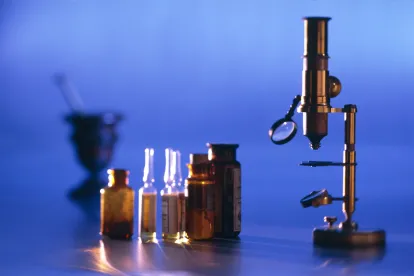In Akamai Techs. Inc. v. Limelight Networks, Inc., (August 13, 2015 Fed. Cir.) an en banc Federal Circuit unanimously held that direct infringement under Section 271(a) can occur:
”where all steps of a claimed method are performed by or attributed to a single entity…Where more than one actor is involved in practicing the steps, a court must determine whether the acts of one are attributable to the other such that a single entity is responsible for the infringement. We will hold an entity is responsible for others’ performance or method steps in two sets of circumstances: (1) where that entity directs or controls others’ performance, and (2) where the actors form a joint enterprise.” Slip Op. at 4.
Two Parties, Acting in Concert
Akamai Technologies (“Akamai”) filed a patent infringement action against Limelight Networks, Inc. (“Limelight”) alleging infringement of U.S. Patent No. 6,108,703 entitled “Global Hosting Service” (the ‘703 Patent) among others. In general, the ‘703 Patent claims methods for delivering content over the Internet. At trial, the parties agreed that Limelight performed some of the steps of the method claims and that Limelight’s customers performed the remaining steps. After the close of evidence, the jury was instructed that Limelight is responsible for its customers’ performance of some of the steps of the patent claims if the company directs or controls its customers’ activities. The jury found Limelight did so, and therefore found that several of the ‘703 Patent claims were infringed. Limelight subsequently filed a motion for reconsideration of the verdict in light of the Federal Circuit’s holding in Muniauction, Inc. v. Thomson Corp., 532 F.3d 1318, 1329 (Fed. Cir. 2008), which held that a defendant can be liable for direct infringement under 35 U.S.C. § 271(a) only if it alone performs every step of a claimed method or if the steps are undertaken by multiple parties but the defendant exercises control or direction over the entire process such that every step is attributable to the controlling party. The district court granted Limelight’s motion, holding as a matter of law that Limelight was not liable. Akamai appealed to the Federal Circuit.
On appeal, the Federal Circuit did not address liability under 35 U.S.C. § 271(a), but rather found liability on a theory of inducement to infringe under 35 U.S.C. § 271(b). On appeal, the Supreme Court subsequently reversed the Federal Circuit’s holding, and returned the case to the Federal Circuit to revisit the issue of whether Limelight was liable under a theory of direct infringement. See Limelight Networks, Inc. v. Akamai Techs., Inc., 134 S.Ct. 2111 (2014).
Upon reconsideration, the Federal Circuit reversed the district court’s holding and reinstated the jury verdict of infringement under Section 271(a). The court determined that the evidence presented at trial that Limelight conditions its customers’ use of its content delivery network upon performance of some of the steps of the patent claims (specifically the ”tagging and serving” steps) and the manner and timing of its customers’ performance, was a direction or control of the steps not directly performed by Limelight. More generally, the Federal Circuit stated that:
“Section 271(a) is not limited solely to principle-agent relationships, contractual arrangements, and joint enterprise, … Rather, to determine direct infringement, we consider whether all method steps can be attributed to a single entity.” Slip Op. at 6.
Protecting Investment in Personalized Medicine
It is old news that the U.S. Supreme Court’s patent-eligibility trilogy (Prometheus, Myriad, and Alice) has significantly challenged the patenting and protection of diagnostic methods that are key to personalized medicine. These decisions and the subsequent decisions by the Federal Circuit applying Prometheus, Myriad and Alice, as well as the USPTO’s interpretation of the courts’ rulings have forced upon those interested in patenting these discoveries to reassess what can and should be patented. Purified or isolated naturally occurring products of nature (e.g. DNA, proteins, chemical compounds) and the correlation between a clinical marker, such as a genetic mutation or cell-surface marker, and clinical intervention or prognosis are no longer broadly patent-eligible.
A patent strategy that may still protect a companion diagnostic is a “test-and-treat” type claim that links the diagnostic test and the therapeutic intervention. However, such a claim requires two actors for infringement: the technician or laboratory performing the test, and the actor directing administration of the therapeutic. A method claim having steps divided between two actors has been challenging to enforce against two parties because of the Federal Circuit’s Muniacuction holding that direct infringement under 35 U.S.C. § 271(a) could only occur where all steps of the claimed method are performed or attributed to a single entity. However, the Federal Circuit’s expanded application of direct infringement here under Akamai Technologies, Inc. v. Limelight Networks, Inc., may provide a theory under which test-and-treat claims can be enforced to protect diagnostic innovation.




 />i
/>i

